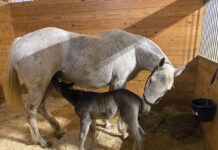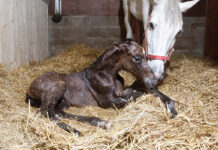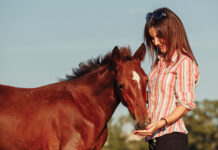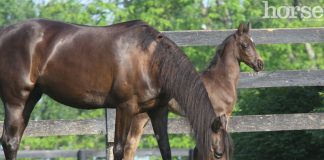Sooner or later, it’s got to happen. Separating mama and baby always causes some level of stress, but when it’s time to wean, there are definitely things you can do to make it easier—and safer—for all involved.

Before weaning, the foal should also be eating concentrate (designed for foals) and hay in sufficient quantities to meet his nutritional requirements since he will no longer be nursing.
The Stress of Weaning
“It is difficult to keep weaning from being stressful but there are a few things that are helpful to remember. Both the mare and foal will be stressed, but the mare can handle the stress better than the foal in most cases, so the process should favor the foal,” says Faith Hughes, DVM, DACVS, who has been with Peterson & Smith Equine Hospital, Florida’s largest veterinary hospital, since 1991.
“There are two components to the stress. One is the separation and the other is disruption of routine,” explains Dr. Hughes. “Horses are all more comfortable with routine. You want to minimize the disruption of the foal’s routine, so this means moving the mare at weaning, not the foal. This way the foal remains in familiar surroundings.”
Group Pasture Weaning
Studies have shown that group pasture weaning is the least stressful on all concerned. In this scenario, several mares and foals have been pastured together, preferably since the foals were very young. As the foals approach weaning time, one or two mares are removed every week or 10 days. The dams of the oldest and most independent foals are usually taken out of the pasture first and moved to a distant pasture where they cannot hear or see their foals. Because the mares are with other mares they are familiar with, they soon settle down in their new field. Meanwhile, their foals stay in their same environment with the buddies they’ve been with these past months. The removal of mares continues until the last foals have been weaned.
With stall or barn weaning, the mares and foals to be weaned are brought into the barn. The foals are then left inside the stalls while the mares are taken to a distant pasture where they can’t hear or see their foals. Feed tubs and anything else the foal can run into should be taken out of the stall before the mare is removed. Although it may seem that the newly weaned foals won’t be as lonely if there are two foals in one stall, studies have shown this to be more stressful on them than being alone in their own stall.
After foals have quieted down, they can be turned out in a group. This may be in a matter of days, or even a week or two. It is best to keep foals together that were in the same pasture before weaning since they will already have established buddies. Some farms leave one of the quietest mares in the field to help “baby-sit” and then wean her a few weeks later.
“Often we want to keep foals confined at weaning to protect them from running through fences, etc. This is a good idea, but don’t make weaning the first time they have ever been confined,” cautions Dr. Hughes. “If they are comfortable being confined, then that part of the stress is eliminated.”
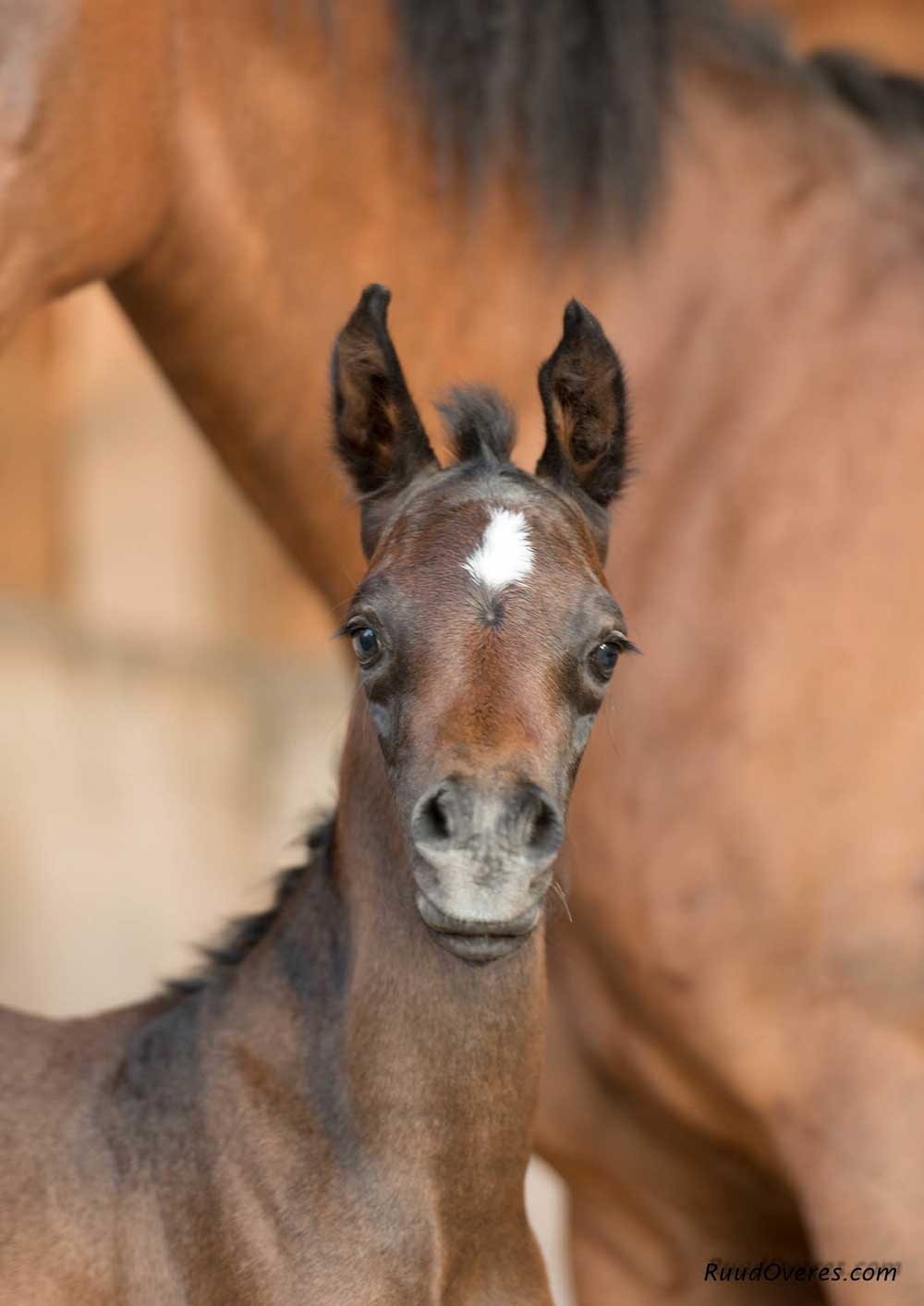
This is important to remember if you are considering barn weaning.
“As far as separation stress goes, for both the mare and the foal, if they can be with friends when weaning occurs, the stress is tremendously decreased,” adds Dr. Hughes. “When there are no other foals that can be weaned together, if the foal is comfortable with humans and handling, we can provide some reassurance during the weaning process.”
In fact, on some farms, weaning is viewed as an opportune time for handling of the foal. Just be sure you aren’t putting additional stress on him with the handling. For example, it’s better if the foal is already halter broke and knows how to lead when you go to wean.
Comfort for Mares
To make the weaning process easier on the mare, she should be far enough away that she can’t see or hear her foal. To help reduce udder discomfort, cut her grain ration in half for 48 hours prior to weaning.
For at least the first few days after weaning, the mare should be on pasture or grass hay, but receive no grain to help stop milk production. When grain should be reintroduced to the mare’s diet varies and depends on the mare’s physical condition, when you wean and where the mare is kept. If you have good pasture, she may not need grain for some time. To be on the safe side, consult with your veterinarian about your specific mare and situation.
Check her udder daily to monitor how she is “drying up” and to make sure she isn’t developing mastitis (a painful inflammation of the udder).
Finally, be sure to schedule weaning in the morning when you’ll be around all day to observe the newly-weaned mare and foal.
Signs a Foal is Ready for Weaning
- At least 3 months of age, preferably between 4 to 6 months old
- Eating his own ration routinely with a good appetite
- Good overall physical health
- Normal attitude is bright and alert
- Shows consistent independence from dam
- Interacts socially with other foals
- Comfortable with being handled, led and groomed
- Not under stress from other factors, such as weather
- Already on an established blacksmith, deworming, vaccination program
Don’t Wean:
- When the weather is hot and humid
- At the same time foals are being vaccinated or having any other blacksmith or vet work done
- If the foal has recently been ill or off his feed for any reason
- If the foal is not in good health overall
- In the afternoon or evening when you can’t easily observe horses for a length of time
Liked this article? Here are others on mare and foal care:
Feeding Broodmares and Foals
The Bond Between Mare and Foal
A Foal-Safe Plan

